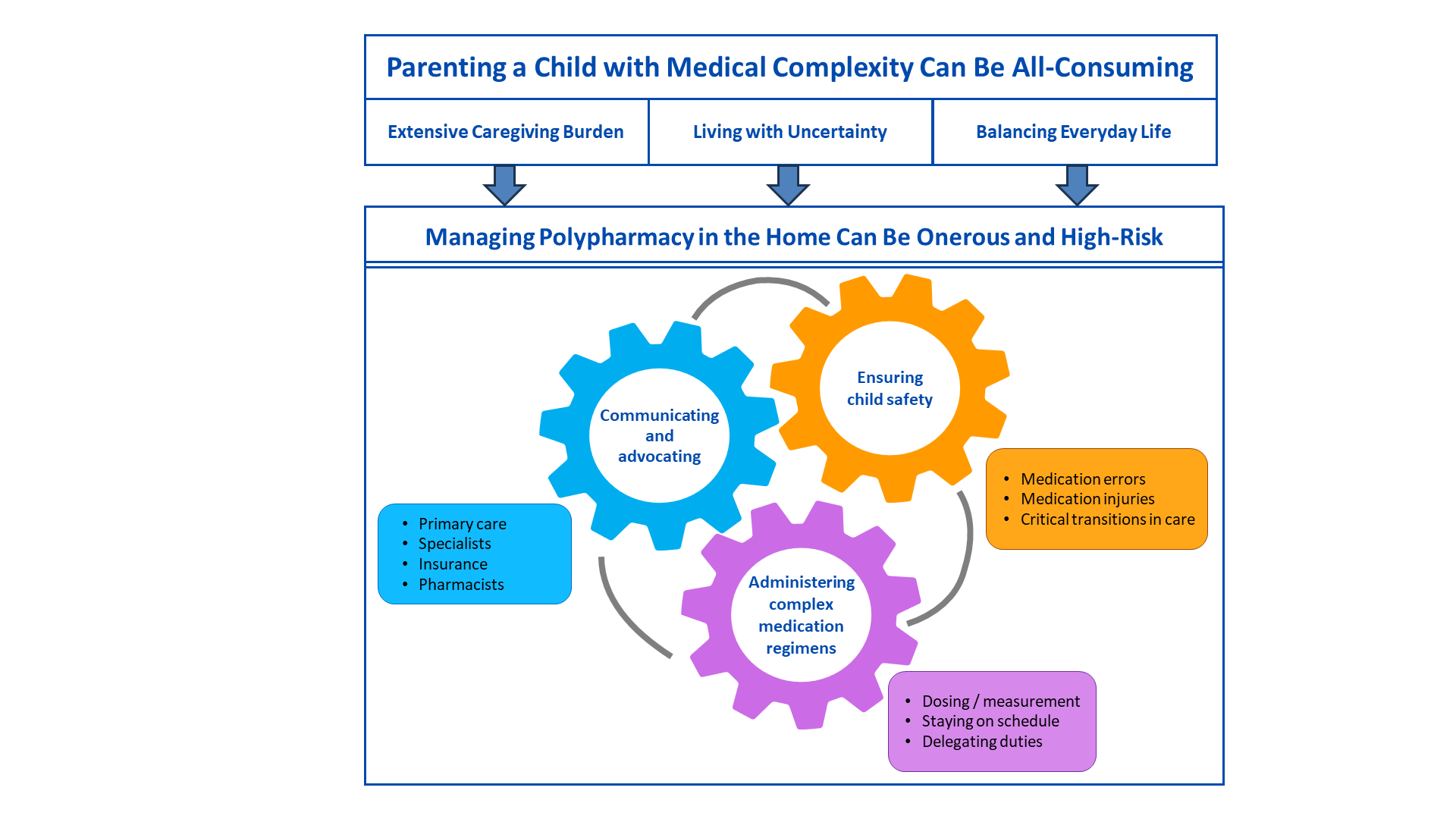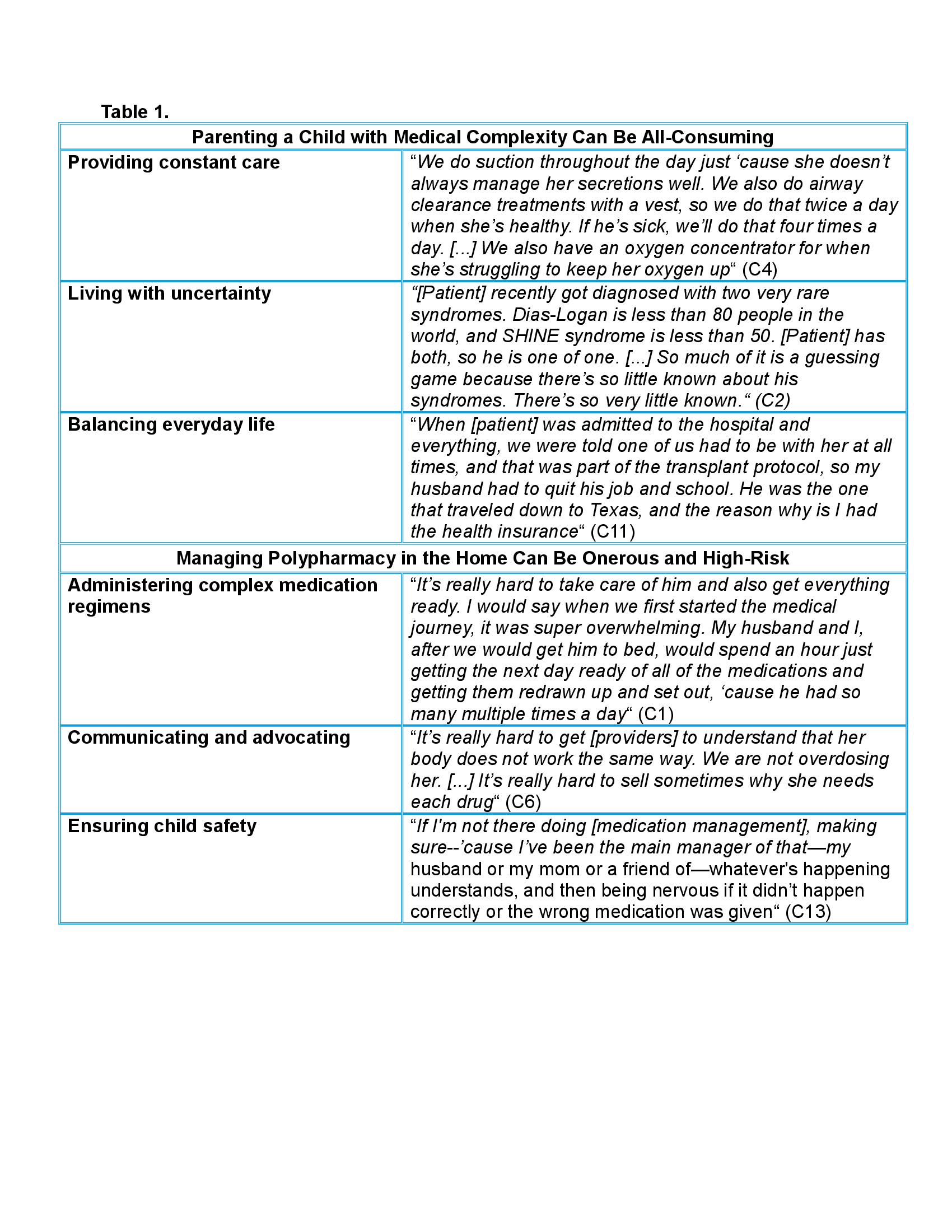Children with Chronic Conditions 3
Session: Children with Chronic Conditions 3
458 - Keeping Track of it All: A Grounded Theory Study of How Caregivers Manage Polypharmacy in Children with Medical Complexity
Monday, April 28, 2025
7:00am - 9:15am HST
Publication Number: 458.5624
Lucas E.. Orth, Children's Hospital Colorado, Denver, CO, United States; Talia Thompson, University of Colorado School of Medicine, Aurora, CO, United States; Julia Reedy, University of Colorado School of Medicine, Denver, CO, United States; Anowara Begum, University of Colorado School of Medicine, Aurora, CO, United States; James A. Feinstein, University of Colorado School of Medicine, Englewood, CO, United States

Lucas E. Orth, PharmD (he/him/his)
Assistant Professor of Pharmacy
Children's Hospital Colorado
Denver, Colorado, United States
Presenting Author(s)
Background: Children with medical complexity (CMC) often require polypharmacy (≥5 concurrent medications).
Objective: To understand key factors and challenges related to how caregivers manage polypharmacy for CMC in outpatient settings.
Design/Methods: This study is part of a hybrid type 2 randomized controlled trial assessing the effectiveness of a structured pharmacist-led Pediatric Medication Therapy Management (pMTM) intervention compared to usual care in a large, outpatient, patient-centered medical home for CMC. This ongoing grounded theory study uses semi-structured interviews with caregivers of CMC to explore their subjective experiences managing polypharmacy. We are using theoretical sampling to recruit caregivers of CMC with polypharmacy that have low or high medical technology use. A multidisciplinary team is conducting constant comparative analysis via iterative open, axial, and selective coding, theme development, and the creation of a novel theory. Negative case analysis and investigator triangulation will bolster methodological rigor. We plan to recruit a total of N=40 caregiver participants.
Results: Preliminary results (n=12 as of Oct 2024) show two emergent overarching themes and six subthemes. 1) Parenting a child with medical complexity can be all-consuming: CMC require extensive caregiving that dominates caregivers’ lives and creates a heavy cognitive load. Families of CMC face marked uncertainty resulting from rare and complex diagnoses, exacerbated by ambiguous prognoses and a lack of definitive guidance. Caregivers often undergo employment changes while balancing needs for income and insurance with care demands. 2) Managing polypharmacy at home can be onerous and high-risk: Caregivers are responsible for administering complex medication regimens in home settings with frequent changes to dosing and administration methods. Participants report a need to effectively communicate about medications with providers and payers and regularly advocate on their child’s behalf. Caregivers’ primary goal is to ensure child health and safety including efforts to avoid drug errors and injury. Figure 1 presents a novel theory of caregiver management of polypharmacy for CMC via graphic illustration of relationships between key concepts and processes. Table 1 shows illustrative quotes to support our interpretation of the data.
Conclusion(s): Results may inform the development of family-centered interventions to support polypharmacy management for CMC in outpatient settings. Future directions include assessment of parent-perceived barriers and facilitators to pMTM to address their medication-related needs.
A novel theory of caregiver management of polypharmacy for Children with Medical Complexity
 Figure 1 presents a novel theory of caregiver management of polypharmacy for CMC via graphic illustration of relationships between key concepts and processes.
Figure 1 presents a novel theory of caregiver management of polypharmacy for CMC via graphic illustration of relationships between key concepts and processes.Caregiver-provided illustrative quotes to support interpretation of the interview data
 Table 1 provides illustrative quotes to support our interpretation of the data.
Table 1 provides illustrative quotes to support our interpretation of the data. A novel theory of caregiver management of polypharmacy for Children with Medical Complexity
 Figure 1 presents a novel theory of caregiver management of polypharmacy for CMC via graphic illustration of relationships between key concepts and processes.
Figure 1 presents a novel theory of caregiver management of polypharmacy for CMC via graphic illustration of relationships between key concepts and processes.Caregiver-provided illustrative quotes to support interpretation of the interview data
 Table 1 provides illustrative quotes to support our interpretation of the data.
Table 1 provides illustrative quotes to support our interpretation of the data. 
